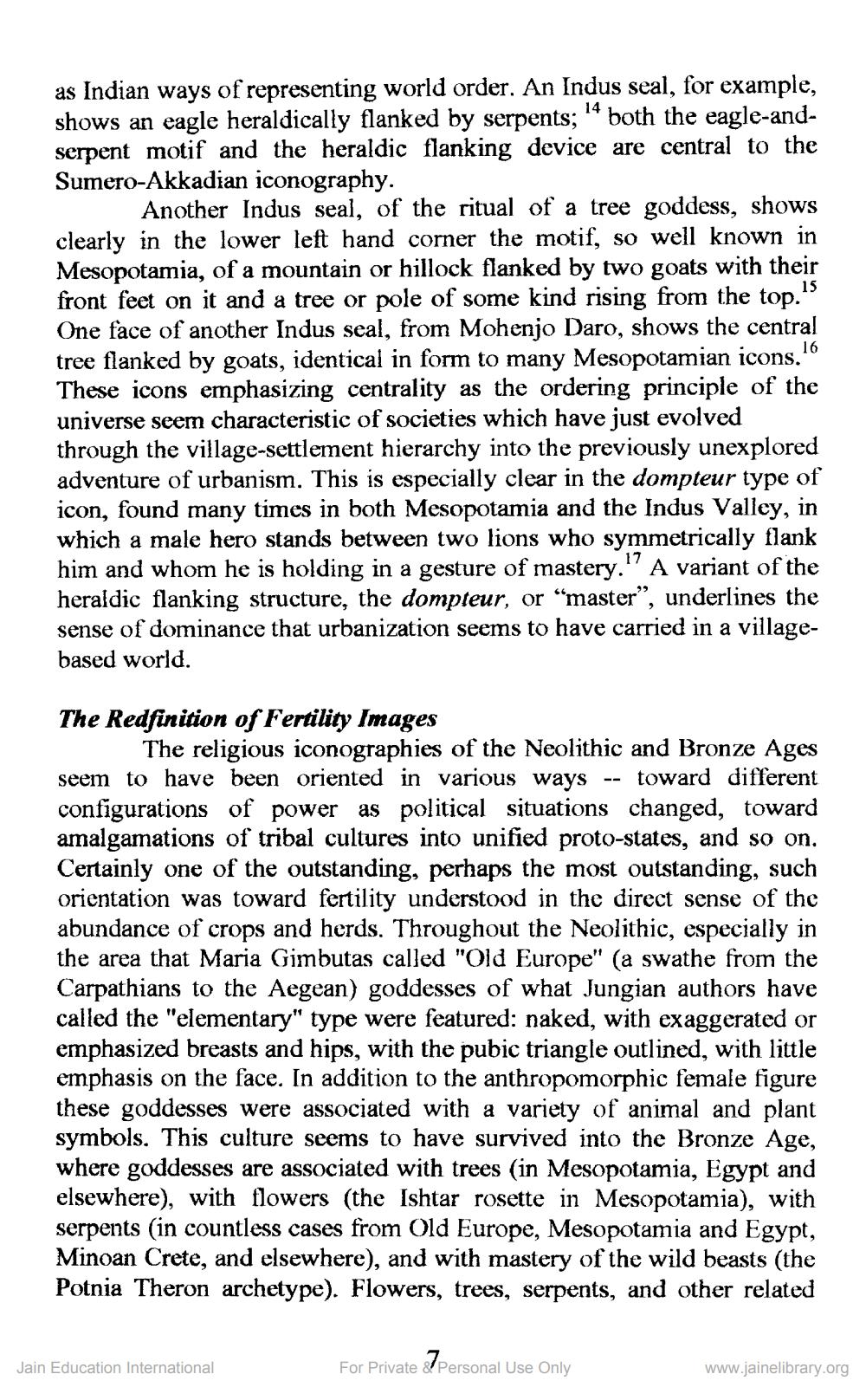________________
14
as Indian ways of representing world order. An Indus seal, for example, shows an eagle heraldically flanked by serpents; 4 both the eagle-andserpent motif and the heraldic flanking device are central to the Sumero-Akkadian iconography.
15
16
Another Indus seal, of the ritual of a tree goddess, shows clearly in the lower left hand corner the motif, so well known in Mesopotamia, of a mountain or hillock flanked by two goats with their front feet on it and a tree or pole of some kind rising from the top." One face of another Indus seal, from Mohenjo Daro, shows the central tree flanked by goats, identical in form to many Mesopotamian icons. These icons emphasizing centrality as the ordering principle of the universe seem characteristic of societies which have just evolved through the village-settlement hierarchy into the previously unexplored adventure of urbanism. This is especially clear in the dompteur type of icon, found many times in both Mesopotamia and the Indus Valley, in which a male hero stands between two lions who symmetrically flank him and whom he is holding in a gesture of mastery.1 A variant of the heraldic flanking structure, the dompteur, or "master", underlines the sense of dominance that urbanization seems to have carried in a villagebased world.
The Redfinition of Fertility Images
The religious iconographies of the Neolithic and Bronze Ages seem to have been oriented in various ways toward different configurations of power as political situations changed, toward amalgamations of tribal cultures into unified proto-states, and so on. Certainly one of the outstanding, perhaps the most outstanding, such orientation was toward fertility understood in the direct sense of the abundance of crops and herds. Throughout the Neolithic, especially in the area that Maria Gimbutas called "Old Europe" (a swathe from the Carpathians to the Aegean) goddesses of what Jungian authors have called the "elementary" type were featured: naked, with exaggerated or emphasized breasts and hips, with the pubic triangle outlined, with little emphasis on the face. In addition to the anthropomorphic female figure these goddesses were associated with a variety of animal and plant symbols. This culture seems to have survived into the Bronze Age, where goddesses are associated with trees (in Mesopotamia, Egypt and elsewhere), with flowers (the Ishtar rosette in Mesopotamia), with serpents (in countless cases from Old Europe, Mesopotamia and Egypt, Minoan Crete, and elsewhere), and with mastery of the wild beasts (the Potnia Theron archetype). Flowers, trees, serpents, and other related
Jain Education International
For Private & Personal Use Only
--
www.jainelibrary.org




